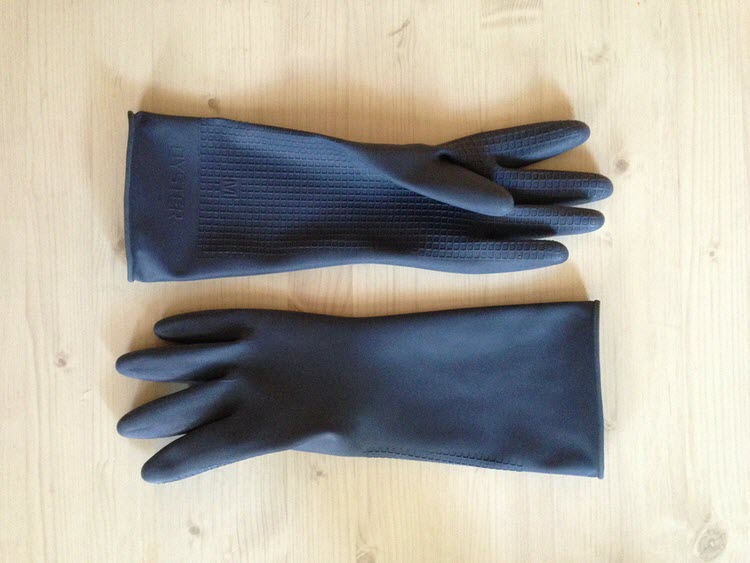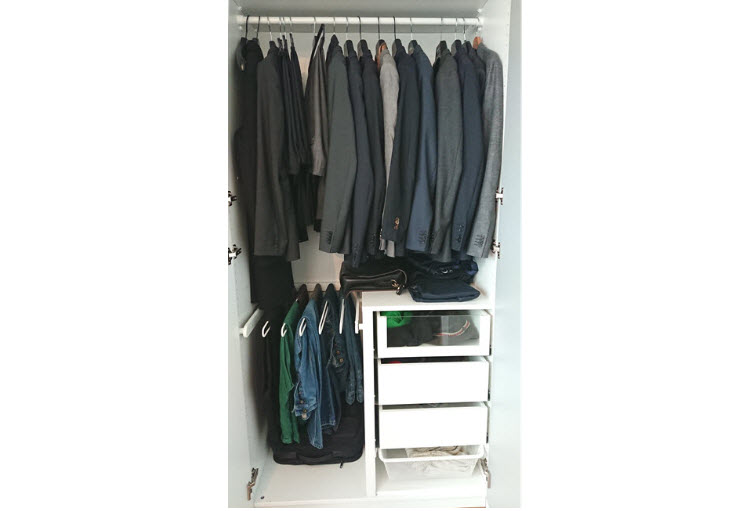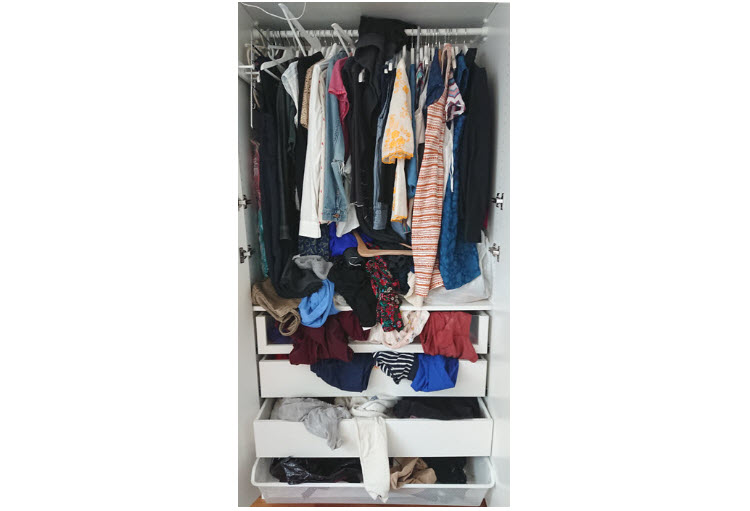
Organize your reference database with our 10-step checklist
If your reference management program were a closet, would it look like this?

Or more like this?

If it's the latter, you're not alone. In a perfect world, we’d all be extremely diligent about entering our references into our reference management programs before working with them. We’d check that all the information matched the actual source and try to fill in any gaps. We’d spend time carefully checking over each one, giving it tags or keywords and assigning it to folders or categories for better organization.
In reality, many of us don’t work this systematically all the time – especially under tight deadlines. In addition, since it’s so easy to add sources to your citation management tool, you can quickly end up with more than you'll ever need.
In a previous blog post, we wrote about ways you can keep yourself from cluttering up your project during your literature search. However, if it’s too late and your reference library is now filled to the brim, we’ve got some tips to help you get everything organized again.
Why organize your reference database?
Why even bother cleaning up your reference management program? If your citation tool is full of incorrect or incomplete information, you could end up with problems in your citations and bibliography later on. Garbage in, garbage out.
In addition, a library full of duplicated or outdated results can slow you down when you’re searching for a specific source. Imagine you’re looking for a reference to cite and then you find three sources with the same title but with the authors written in slightly different ways – and all of them have incomplete information. You’ll have to spend time deciding which one is the best to use and then you’ll need to add the missing information. If you have a tight deadline, you might not want to spare those precious minutes.
Below we've given you a 10-step cleaning plan to get your reference management program sorted out. Use our downloadable checklist to mark off each item one-by-one.
Spring cleaning checklist for your citation software:
- Install your updates
This one’s an easy win. Install updates to your software program, Word processor, and operating system to make sure that everything is running as up-to-date as possible. While software updates very occasionally contain new bugs, their advantages – bug fixes, performance improvements, and sometimes even new features – far outweigh the risks. - Add missing reference information
If you tend to hastily add references to your project, you should periodically go through your recent additions and check their information. While this is a good activity to do during your spring cleanup, it shouldn’t be a one-time occurrence! Try to make a habit of reviewing citation information more regularly, for example, whenever you need a break from an intense reading or writing session.In many reference management programs, you can sort references by when they were added and then go through them one by one and field by field. In Citavi, in addition or instead of displaying the recently added references, you can also assign a task to all newly added references that reminds you to double-check their bibliographic information.
Similar to #2 above, it can be easy to forget to add entire sources, especially if you don’t use your referencing tool with your Word processing program.
If you’re hurrying to finish up a paper, for example, you might hastily locate and read a source, and then add some citations to your paper from it at the last minute.
If you think you will be writing on the same topic in the future, it can make sense to go back and add references from an already submitted paper to your project later on. Most programs will let you simply import the PDFs on your computer and then will add the bibliographic information for you, as long as a DOI number is available. If you’re working with books and using Citavi, you can add their information automatically using the ISBN number.
When you’re adding sources from different databases or other online resources, it can be easy to end up with a few different versions of the same reference in your project. Duplicate references bloat your library, and they can cause problems with citation formatting. For example, if you cite two different versions of the same source, your Word plug-in might apply special rules for ambiguous references since it thinks it’s dealing with two different sources written by the same author in the same year.
Nearly all reference management programs have some type of duplicate detection, so if yours does, too, make sure to run it every now and again. Some programs even have merging features.
Although Citavi’s duplicate detection doesn’t allow for merging, Citavi does check for duplicates when you add references. This helps you avoid accidentally importing duplicates in the first place.
If you are using information from different databases or enter it yourself, you might see an author or journal that is listed two or more times with different spellings. If your program offers a way to merge author, journal or publisher names, go through and clean them up.
From the list menu in Citavi, you easily manage lists of authors, journals, publishers, and libraries. If you are using a program that doesn’t have a “Lists” feature, but still want to unify your author names, you can instead sort your references by author name and then go through them one-by-one to find authors written in different ways.
Take this opportunity to also add in additional information that might be helpful, such as abbreviations for journal articles. Now is also a good time to correct any author names in all caps that might have snuck into your project through a database import.
Similar to step #5, it can also be a good idea to go through any lists of tags, keywords, categories, folders, or groups that you have in your project. Are there any that should be changed, deleted, or merged together? Many programs have options for doing this, and updating your personal classification systems can help you more easily locate important references down the line.
You might also want to check for unused classification items in your project. Citavi lets you view and delete all of the keywords, categories, and/or groups in your project that are not in use.
If your project contains online sources, check if all of the links still work. If a webpage no longer is accessible and you didn’t make a copy of its text, you may want to delete the reference from your project altogether.
If you do still need a link that’s no longer accessible, use The Wayback Machine to see if you can find an archived copy of the webpage and then add this link to the corresponding field in your citation software.
In Citavi you can install and run a link checker add-on. It will go through every reference in your project with a URL, check if the link is still valid for each one, and then enter the current date in the “Access date” field if it still exists.
In the library world, the process of getting rid of items that are not widely used or that have outdated information is known as “weeding”. Do some weeding in your own project by sorting your sources by the “Last modified” date and then going through and deleting the ones you haven’t used in a while and no longer need.
If you still want to keep references for completed projects, even if you don’t expect to use them anytime soon, it might be better to archive these references rather than delete them (see step 10 below).
Especially if you have a lot of notes or other texts in your software, you might want to run spell-check if your program offers it. Just make sure that the default spelling dictionary is set to the primary language you’re using! In some programs, including Citavi, you may be able to select multiple dictionaries in different languages or add new terms to the default dictionary.
Although some reference management users like to use one global project for everything, some create a new project or library for each paper, journal article, or book project. If you belong to the latter category, once your project is complete, you may want it to be out of immediate view but still accessible if you ever need to use a source from it again.
If you’re using a program installed on your computer, archiving your completed project might simply mean moving the project file and attachments to a backup drive. Other programs, including Citavi, have an archiving feature that lets you generate a compressed file containing either just your project or the project and its attachments.
We hope these tips will inspire you to do a little spring cleaning in your own reference management program!
Do you do anything to regularly maintain your collection of references? Are there any tips we left out? Let us know on our Facebook page!
